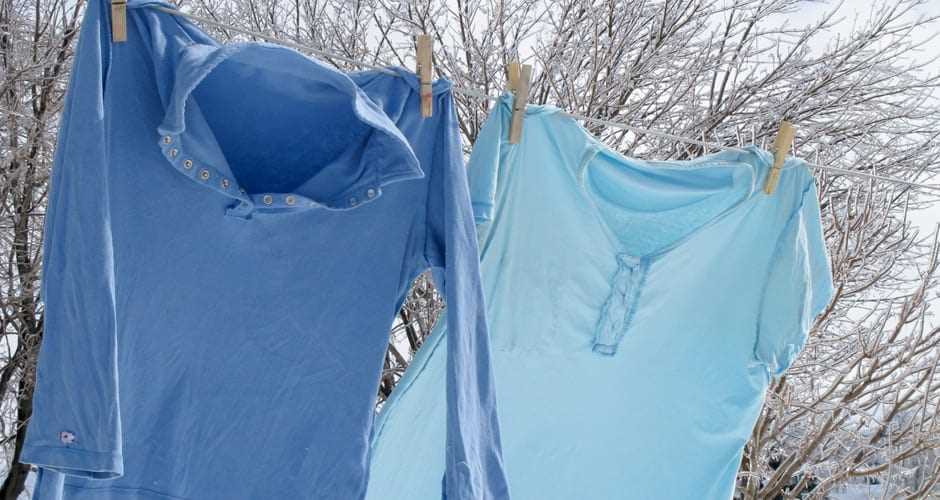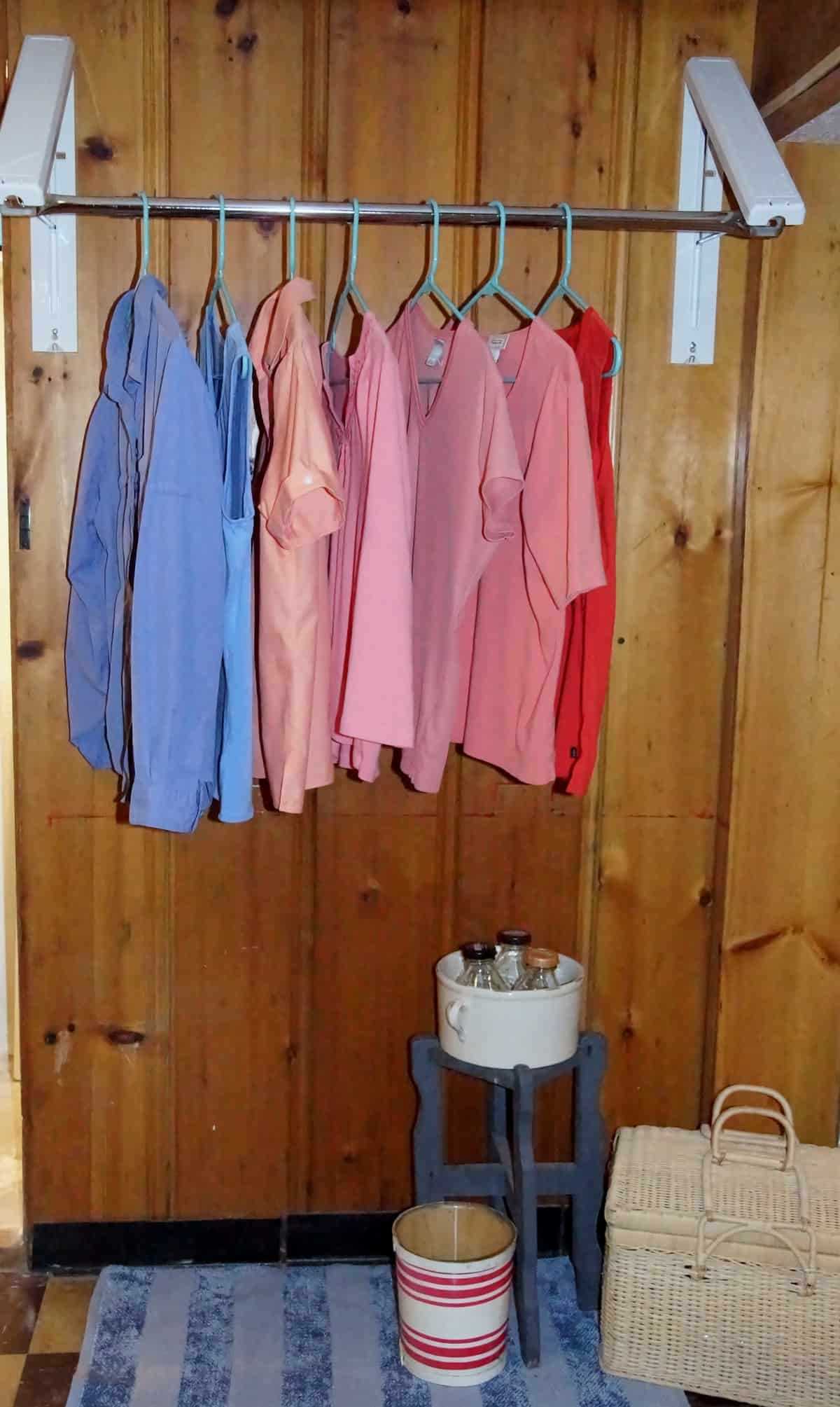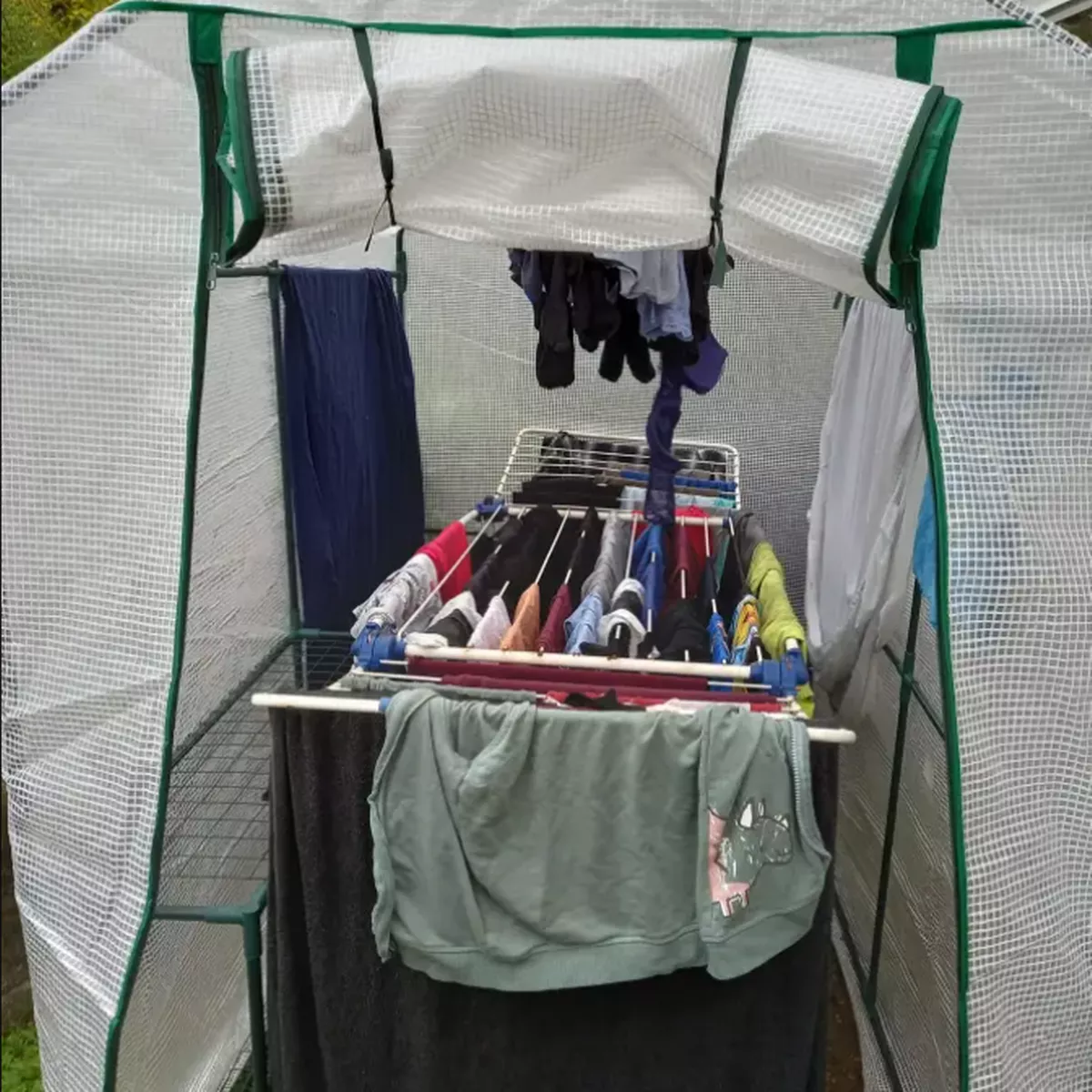




Doing laundry can be a challenge in the winter months when it’s too cold to hang clothes outside to dry. However, with a little creativity and the right techniques, you can still dry your clothes efficiently indoors. In this article, we will provide you with some useful tips and tricks on how to dry clothes in the winter.
1. Invest in a Clothes Drying Rack: One of the most effective ways to dry clothes indoors during winter is by using a clothes drying rack. These racks are designed with multiple bars or lines for hanging clothes, allowing air to circulate and dry them naturally. Look for a rack with a large capacity and sturdy construction to ensure it can hold heavier items like coats and jeans.
2. Utilize Radiators and Heaters: Radiators and heaters can also be a convenient option for drying clothes in the winter. Place a drying rack near a radiator or heater and hang your clothes on it. The heat produced by these appliances will help speed up the drying process. Just make sure to keep a safe distance between the clothes and the heat source to prevent any damage.
3. Use a Dehumidifier: Winter air tends to be dry, which can prolong the drying time for wet clothes. To counteract this, consider using a dehumidifier in the room where you’re drying your clothes. A dehumidifier will help remove excess moisture from the air and create a more optimal drying environment.
4. Take Advantage of Sunny Spots: On sunny winter days, take advantage of any sunny spots in your home. Place the clothes drying rack near a window or in a sunlit room. The sunlight will help dry your clothes naturally and add a fresh scent. Just be mindful of the temperature outside, as clothes may freeze if it’s extremely cold.
5. Opt for Quick-Drying Fabrics: When doing laundry in the winter, consider using quick-drying fabrics, such as microfiber or synthetic blends. These fabrics are designed to dry faster than natural fibers like cotton. By using quick-drying fabrics, you can reduce the overall drying time and have your clothes ready to wear sooner.
Don’t let the winter weather dampen your laundry routine. With these tips and tricks, you can effectively dry your clothes indoors and ensure they stay in great condition. Whether you’re using a clothes drying rack, utilizing heaters or sunny spots, or opting for quick-drying fabrics, there are plenty of ways to keep your clothes fresh and dry all winter long.
Indoor Drying Methods
During the winter months, it can be challenging to dry clothes outdoors due to the cold weather and lack of sunlight. However, there are several indoor methods that you can use to effectively dry your clothes.
1. Clothes Rack
A clothes rack is a simple and convenient way to dry clothes indoors. You can set up the rack in a well-ventilated area such as a laundry room or near a window. Hang your clothes on the rack, ensuring that there is enough space between each item for air circulation. Leave the clothes to dry naturally, and avoid placing them too close to a heat source.
2. Clothesline
If you have enough space, you can also set up a clothesline indoors. Install hooks or use a retractable clothesline to hang the clothes. Make sure to leave enough room between the clothes for air to circulate. You can also use clothespins to secure the clothes to the line. As with a clothes rack, avoid placing the clothesline near a heat source.
3. Drying Rack
A drying rack is a versatile option for drying clothes indoors. There are various types of drying racks available, including folding racks, wall-mounted racks, and ceiling-mounted racks. Depending on the space you have, choose a drying rack that suits your needs. Lay your clothes flat on the rack, ensuring that they are evenly spread out for efficient drying.
4. Towel Method
If you need to dry smaller items such as socks or underwear, you can use the towel method. Lay a clean towel on a flat surface, and place your damp clothes on top. Roll the towel and clothes together tightly, squeezing out any excess moisture. Gently unroll the towel and hang the clothes on a rack or clothesline to finish drying.
5. Radiator or Ventilation

If you have radiators or ventilation in your home, you can take advantage of them to speed up the drying process. Place your clothes near or on top of radiators or in front of ventilation to allow the warm air to circulate and dry the clothes faster. However, avoid placing wet clothes directly on electrical heaters to prevent any potential hazards.
6. Dryer Balls or Towels
When using a drying rack or clothesline, you can speed up the drying process by adding dryer balls or towels. These items help to increase air circulation, absorb moisture, and reduce drying time. Simply toss a couple of dryer balls or towels into the load of wet clothes and let them work their magic.
Note: It’s important to ensure proper ventilation when drying clothes indoors to prevent excessive humidity and potential mold growth. Open windows or use a dehumidifier if necessary.
With these indoor drying methods, you can effectively dry your clothes during the winter months and keep them fresh and clean without relying on outdoor drying options.
Proper Ventilation
Proper ventilation is crucial when drying clothes in the winter. Without adequate airflow, clothes may take longer to dry or develop a damp smell. Here are some tips to ensure proper ventilation:
1. Use a Clothes Drying Rack

A clothes drying rack is a useful tool for drying clothes indoors during the winter. It allows air to circulate around the clothes, aiding in the drying process. Place the rack in a well-ventilated area, such as near a window or an open door.
2. Open Windows and Doors
Whenever possible, open windows and doors to allow fresh air to enter the room. This will help in removing moisture from the drying clothes and prevent the room from becoming too humid.
3. Use a Dehumidifier

If the humidity levels in your home are high, consider using a dehumidifier to reduce moisture in the air. This will help clothes dry faster and prevent mold and mildew growth.
4. Use a Fan
Set up a fan near the drying area to improve air circulation. The fan will help to move air around the room and speed up the drying process.
5. Avoid Overcrowding

Avoid overcrowding the drying area, as this can restrict airflow and prolong drying time. Leave enough space between items to allow air to circulate freely around them.
6. Rotate Clothes
Periodically rotate the clothes on the drying rack to ensure even drying. This will help prevent any spots of dampness and promote proper ventilation.
7. Clean Dryer Vents Regularly

If using a dryer, make sure to clean the vents regularly. Clogged vents can restrict airflow and reduce drying efficiency.
By following these tips, you can ensure proper ventilation while drying your clothes in the winter. This will help them dry faster and maintain their freshness.
Using a Clothes Dryer

1. Check the manufacturer’s instructions
Before using a clothes dryer to dry your clothes, it is important to read and understand the manufacturer’s instructions. Different dryers have different features and settings, so it is important to know how to operate your specific dryer safely and effectively.
2. Sort your laundry
Just like when drying clothes in the winter using other methods, it is important to sort your laundry before placing it in the dryer. Sort your clothes by fabric type and weight to ensure that you are using the appropriate settings for each load.
3. Shake out your clothes
Before placing your clothes in the dryer, give them a good shake to remove any wrinkles and any loose lint or debris. This will help your clothes dry more evenly and reduce the need for ironing later.
4. Adjust the dryer settings
Most dryers have several different heat and time settings to choose from. Use the appropriate settings for your specific laundry needs. Delicate fabrics require lower heat settings and shorter drying times, while heavier fabrics may need longer drying times and higher heat settings.
5. Don’t overload the dryer
Overloading the dryer can prevent air circulation, resulting in longer drying times and potentially wrinkled clothes. It can also put additional strain on the dryer’s motor and heating elements. Be sure to leave enough space for the clothes to tumble freely.
6. Remove clothes promptly
Once the dryer cycle is complete, remove your clothes promptly to prevent wrinkling. If your dryer has a cool-down cycle, use it to let the clothes cool off before removing them. This can also help reduce static electricity.
7. Clean the lint trap
Regularly cleaning the lint trap in your dryer is essential for optimal performance and safety. The lint trap collects lint and debris from your clothes during the drying cycle. A clogged lint trap can reduce the dryer’s efficiency and increase the risk of a fire.
8. Consider using dryer balls
Dryer balls are small balls made of rubber or wool that can be added to the dryer to help reduce drying time and soften clothes. They work by agitating the clothes as they tumble, allowing hot air to circulate more freely. This can be especially helpful when drying heavy fabrics like towels or jeans.
9. Use a drying rack for delicate items
For delicate items that cannot be tumble dried, consider using a drying rack instead. This will help prevent damage to the fabrics and will extend their lifespan.
10. Follow laundry care instructions
Finally, always follow the care instructions on your clothing labels. Some items may not be suitable for drying in a dryer, while others may require specific settings or precautions. By following these instructions, you can ensure that your clothes are dried safely and correctly.
Preparing Clothes for Winter Drying
Before you begin drying your clothes in the winter, it’s important to take a few steps to ensure they are prepared for the colder temperature. Follow these tips to help your clothes dry effectively and prevent any damage:
- Check the care labels: Before drying your clothes in the winter, make sure to check each garment’s care label for any specific instructions or restrictions regarding drying methods. Some delicate fabrics may require specific care, such as air-drying or low heat settings.
- Separate heavy and lightweight fabrics: To prevent uneven drying and potential damage, separate your clothes into two categories: heavy fabrics and lightweight fabrics. Heavy fabrics like denim or towels can take longer to dry, so it’s best to dry them separately from lighter fabrics like t-shirts or underwear.
- Remove excess moisture: Before placing your clothes in the dryer, remove any excess moisture by gently wringing them out. This will help speed up the drying process and prevent excessive dampness in the dryer.
- Untangle and unfold: Ensure that all clothes are untangled and unfolded before putting them in the dryer. This will help them dry more evenly and prevent any crumpling or wrinkling during the drying process.
- Choose the right drying setting: Depending on the fabric type and clothing item, select the appropriate drying setting on your machine. Use a low or medium heat setting for delicate fabrics and higher heat settings for sturdier materials. Avoid using the highest heat setting to prevent shrinking or damaging your clothes.
- Consider air-drying: If you have enough space and time, consider air-drying your clothes indoors. Hanging them on a clothesline or using a drying rack can help preserve their quality and prevent any shrinkage or damage from high heat settings.
By following these steps, you can ensure that your clothes are properly prepared for winter drying and maintain their quality throughout the colder months.
Winter Drying Tips for Different Fabrics
Drying clothes in the winter can be a challenge, especially with the cold and damp conditions. Different fabrics require different care to ensure they dry properly and maintain their quality. Here are some winter drying tips for different fabrics:
1. Cotton

Cotton is a versatile fabric that is commonly used in clothing. To dry cotton clothes in the winter, it is best to air dry them indoors. Hang cotton garments on a drying rack or clothesline away from direct heat sources to avoid shrinking or damage from high temperatures. If you need to speed up the drying process, you can gently squeeze excess moisture out of the clothes before hanging them to dry.
2. Wool

Wool is a delicate fabric that requires extra care when drying in the winter. Avoid hanging wet wool garments, as they can stretch and lose their shape. Instead, lay them flat on a clean, dry towel and roll it up to remove excess moisture. Then, reshape the garment and lay it flat on a drying rack or an absorbent surface away from direct heat sources. Avoid using a clothes dryer or applying direct heat, as it can cause shrinkage and damage to woolen items.
3. Synthetic Fabrics
Synthetic fabrics like polyester and nylon are quick-drying and can tolerate low to medium heat. However, it is still best to air dry synthetic clothes in the winter to prevent any damage. Hang them on a drying rack or clothesline away from direct heat sources. If you need to speed up the drying process, you can use a low-temperature setting in the clothes dryer for a shorter duration. Always check the care instructions on the garment label for specific recommendations.
4. Delicate Fabrics
Delicate fabrics such as silk or lace require extra care when drying in the winter. Avoid using a clothes dryer or hanging them on a drying rack, as it can cause stretching, snags, or damage. Instead, lay them flat on a clean, dry towel and gently roll it up to remove excess moisture. Then, reshape the garment and lay it flat on a drying rack away from direct heat sources. It is crucial to follow the care instructions on the garment label to avoid any damage.
5. Denim

Denim is a durable fabric that can withstand air drying in the winter. Hang denim clothes on a drying rack or clothesline to dry. Avoid using a clothes dryer, as it can cause shrinkage or damage to the fabric. To speed up the drying process, you can gently squeeze out excess moisture before hanging them to dry. Avoid hanging denim directly next to other wet clothes to prevent color bleeding.
6. Outdoor Winter Drying
When possible, take advantage of clear, sunny days in the winter to air dry your clothes outdoors. The sun’s UV rays can help kill bacteria and freshen up your clothes. Hang them on a clothesline or drying rack in a sheltered area to prevent them from freezing. However, remember to check the weather forecast and bring your clothes inside before rain or snow arrives to avoid re-wetting.
By following these winter drying tips for different fabrics, you can ensure that your clothes dry properly and maintain their quality throughout the winter months.
FAQ
What are some tips for drying clothes in the winter?
Some tips for drying clothes in the winter include using a dehumidifier, hanging clothes near a heat source, using a clothes rack or drying rack, and using a fan to circulate the air.
Is it possible to dry clothes outside in the winter?
It is possible to dry clothes outside in the winter, but it may take longer due to the colder temperatures. It is important to make sure the clothes are fully dry before bringing them back inside to prevent them from freezing.
How can I prevent clothes from freezing when drying them outside in the winter?
To prevent clothes from freezing when drying them outside in the winter, try using clothespins to hang them up so they don’t touch the ground or any snow. You can also bring them inside for a few minutes to thaw them out before hanging them back up outside.
Can I use a dryer to dry clothes in the winter?
Yes, you can use a dryer to dry clothes in the winter. However, it is important to make sure the vent is clear of any snow or ice to ensure proper ventilation.
Are there any specific materials or fabrics that are more challenging to dry in the winter?
Synthetic materials, such as polyester or nylon, can be more challenging to dry in the winter as they tend to hold on to moisture. It is best to hang these types of materials near a heat source or use a fan to help speed up the drying process.













